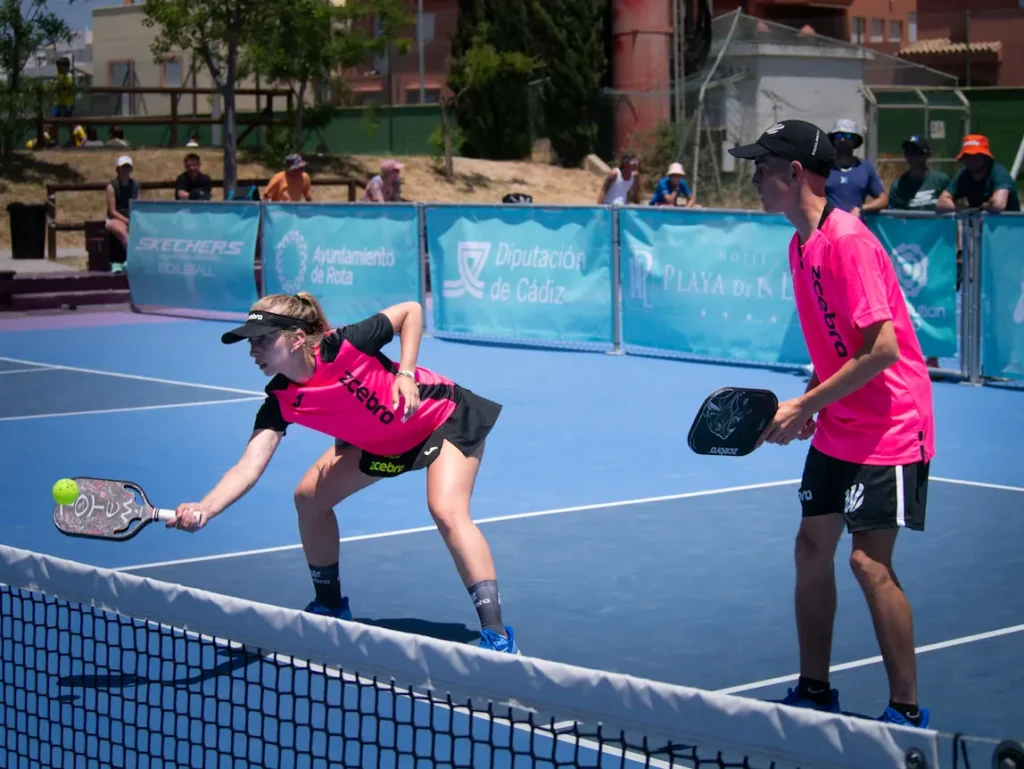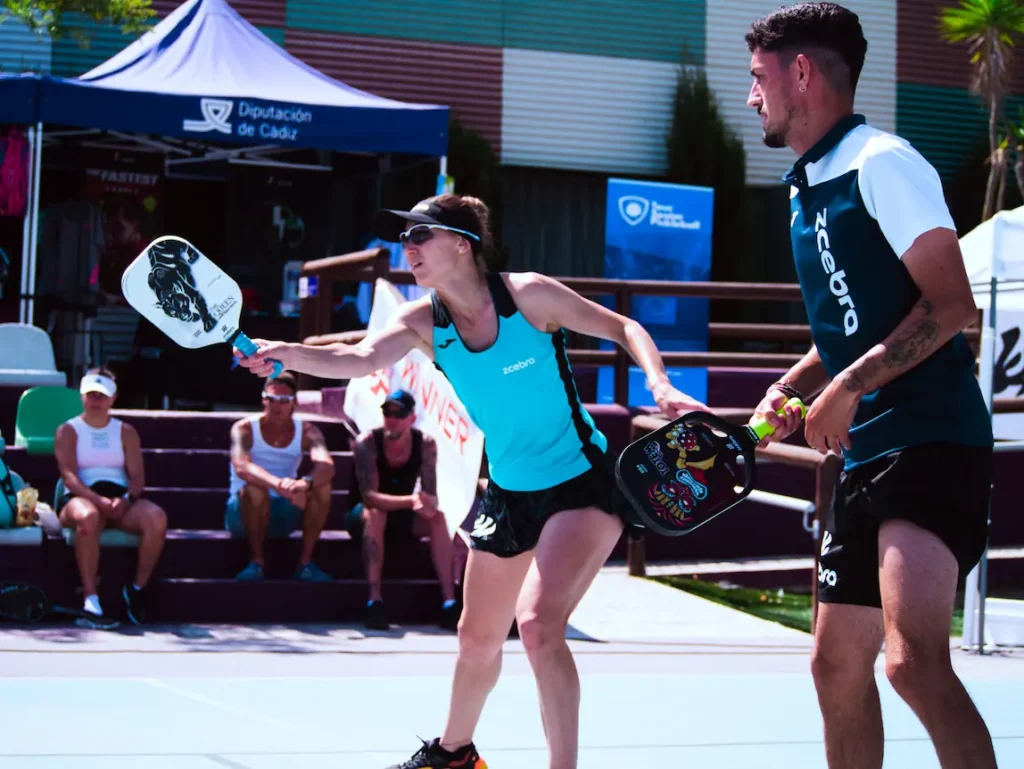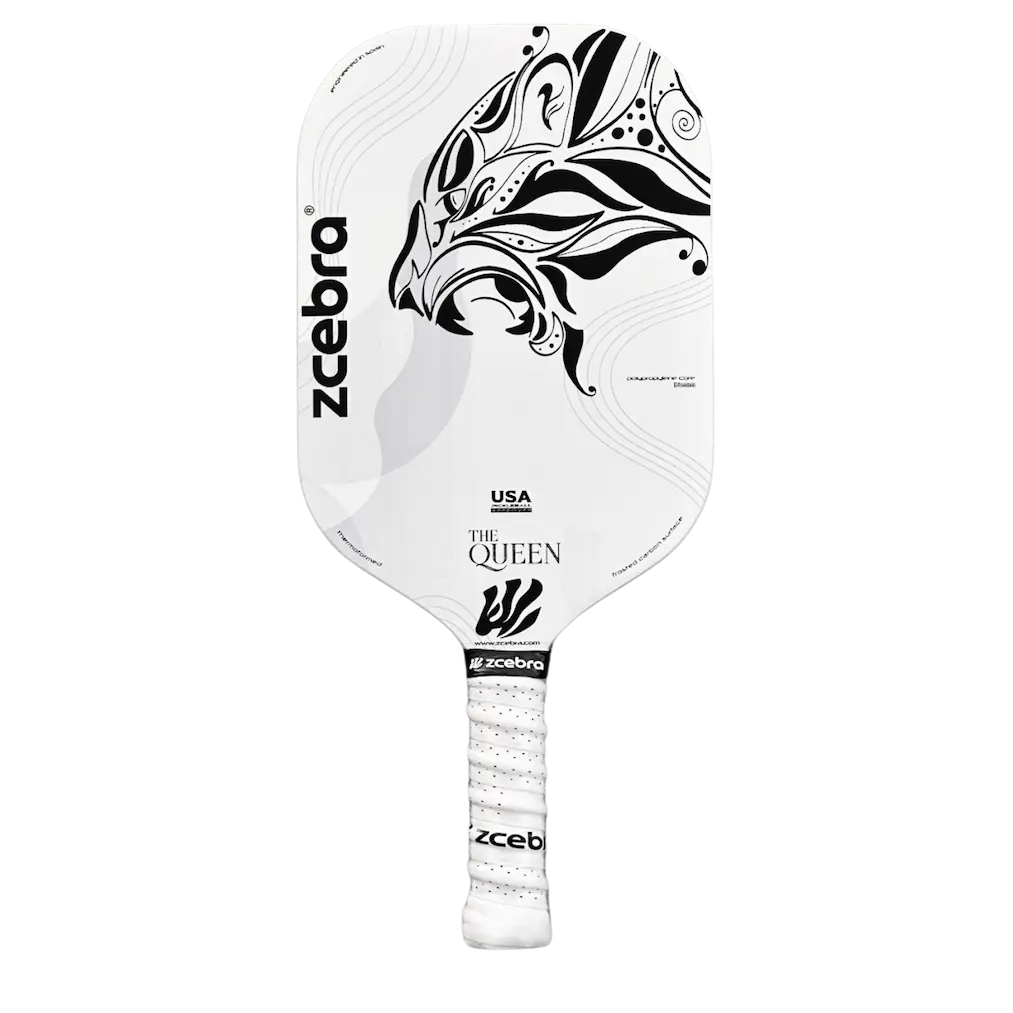Pickleball is a sport that has rapidly gained popularity due to its accessibility and dynamism. Among the various techniques that players can master, the dink stands out as one of the most strategic and essential for controlling the game. In this article, we will thoroughly explore the dink, its importance, and how you can perfect it to take your pickleball game to the next level.
The importance of the dink in your pickleball game
The dink is a soft and controlled shot made near the net, in the no-volley zone. Its primary purpose is to force your opponent to make an uncomfortable shot, making it difficult for them to attack. Mastering the dink not only improves your defense but also allows you to control the pace of the game, forcing your opponent to play conservatively and opening up opportunities for more aggressive attacks.

Basic techniques for an effective dink in pickleball
To perform an effective dink, it is crucial to master the correct position and posture, as well as the grip of the paddle.
Position and posture
In my experience, the base position is fundamental. You should stand with your feet shoulder-width apart, knees slightly bent, and your body leaning forward. Keep your elbows slightly away from your body and prepare the backhand. This posture will allow you to move quickly and adjust your position to hit the ball with precision.
Paddle grip
The grip is one of the most important elements of the dink. Personally, I recommend the continental grip, which allows you to hit both forehand and backhand shots without changing your grip. Imagine you are shaking hands with someone using the paddle, and hold the paddle so that the edge is perpendicular to the ground. This grip provides the versatility needed to respond to different situations during the game.
Execute a perfect dink: step by step
Stroke trajectory
The stroke trajectory should be short and compact. Avoid bringing the paddle behind your body; instead, keep the shot in front of you. When starting the stroke, the paddle should be in front of your body, and the movement should be short and controlled. By following these steps, you ensure that contact with the ball is always made in front of you, improving your accuracy and control.
Use of the legs
Using your legs properly is crucial for a good dink. In my experience, many players tend to bend their backs instead of their legs when trying to hit low balls. You should bend your knees and keep your back straight to lower yourself to the ball’s level. This allows you to move more easily and adjust your position without losing balance.

Common mistakes and how to avoid them
One of the most common mistakes in the dink is excessive upper body movement, which leads to inaccurate shots that are easy for the opponent to attack. Make sure to keep your swing short and controlled. Another mistake is not using your legs properly, making it difficult to reach low balls and maintain control. Always remember to bend your knees and maintain a balanced posture.
Advantages of incorporating the dink in pickleball
The dink offers numerous strategic advantages. By forcing your opponent to respond to low and controlled shots, you can reduce their ability to make powerful attacks. Additionally, the dink allows you to control the pace of the game and set up more effective attacks. By mastering this technique, you’ll better handle transitions and maintain an offensive position on the court.
Advanced dinking strategies in pickleball
Depth and margin for error
It is essential to respect the net and ensure that your dinks have enough margin for error to avoid hitting it. Try to keep the ball about 30-45 cm above the net to minimize errors. Additionally, the depth of the dink is key; aim for the ball to land in the no-volley zone, near your opponent’s feet. This will make it difficult for them to return and increase your chances for a counterattack.
Ball placement
The strategic placement of your dinks can put your opponent at a disadvantage. Aim for the corners of the no-volley zone and vary your shots to keep your opponent moving. This not only disrupts their position but also creates opportunities for you to attack more forcefully when the occasion arises.
Why The Queen Edgeless by Zcebra is ideal for the dink in pickleball
The pickleball paddle The Queen Edgeless by Zcebra is one of the best options for executing dinks in pickleball due to its innovative features and advanced design. The combination of a next-generation carbon fiber face with a thicker polypropylene core provides optimal ball cushioning, which is crucial for controlling the speed and placement of the dink. The rough surface of the paddle generates unparalleled ball spin, allowing you to neutralize your opponent’s spin shots with precision.
Additionally, the edgeless Thermoformed technology of The Queen Edgeless offers exceptional consistency and extreme vibration reduction, providing a smoother and more controlled feel on every shot. This is especially beneficial for dinks, where control and precision are essential. The 16mm polypropylene honeycomb core reduces vibration waves, resulting in a smoother and more precise shot.
The paddle’s edgeless design enhances aerodynamics, making quick and precise movements easier, while the extended sweet spot allows for a greater margin for error, making dinks more consistent. With USAPA approval and cutting-edge design, The Queen Edgeless not only enhances your performance on the court but also gives you a competitive edge by allowing you to execute dinks with greater efficiency and precision.

White Pickleball paddle THE QUEEN
Master the dink and take your game to the next level
Mastering the dink in pickleball is an essential skill that can transform your game. By incorporating the techniques and strategies described, you’ll be able to better control the pace of the game, force errors from your opponents, and create opportunities for effective attacks. With practice and dedication, the dink will become a powerful tool in your pickleball arsenal, helping you outplay your opponents and enjoy the game even more.
FAQS about the dink in pickleball
A dink is a soft and controlled shot made near the net, in the no-volley zone, with the goal of keeping the ball low and forcing your opponent to make an uncomfortable shot.
You can practice the dink using a wall. Hit the ball against the wall and focus on keeping the shots soft and controlled, simulating the dink action.
There is no definitive answer, as it depends on the situation and the player’s preference. It’s important to be able to dink both forehand and backhand to be a more versatile player.
To prevent your dink from being attacked, make sure to keep the ball low and close to the net. Additionally, vary the placement of your dinks to keep your opponent moving and make it harder for them to attack.
Some common mistakes include taking the paddle behind the body, not using the legs properly, and making the swing too long. Keep the shot short and controlled, and use your legs to lower yourself to the ball.
The wind can affect the trajectory and control of the dink. In windy conditions, it is important to adjust the strength and direction of your shots to maintain control of the ball.
Opt for a dink when you are in a defensive position or when you want to change the pace of the game to destabilize your opponent. The dink is an excellent tool for forcing errors and setting up more effective attacks.
Both are soft shots, but a drop shot is usually performed from the baseline or mid-court to make the ball drop gently into the opponent’s no-volley zone. The dink, on the other hand, is executed closer to the net within the no-volley zone.























